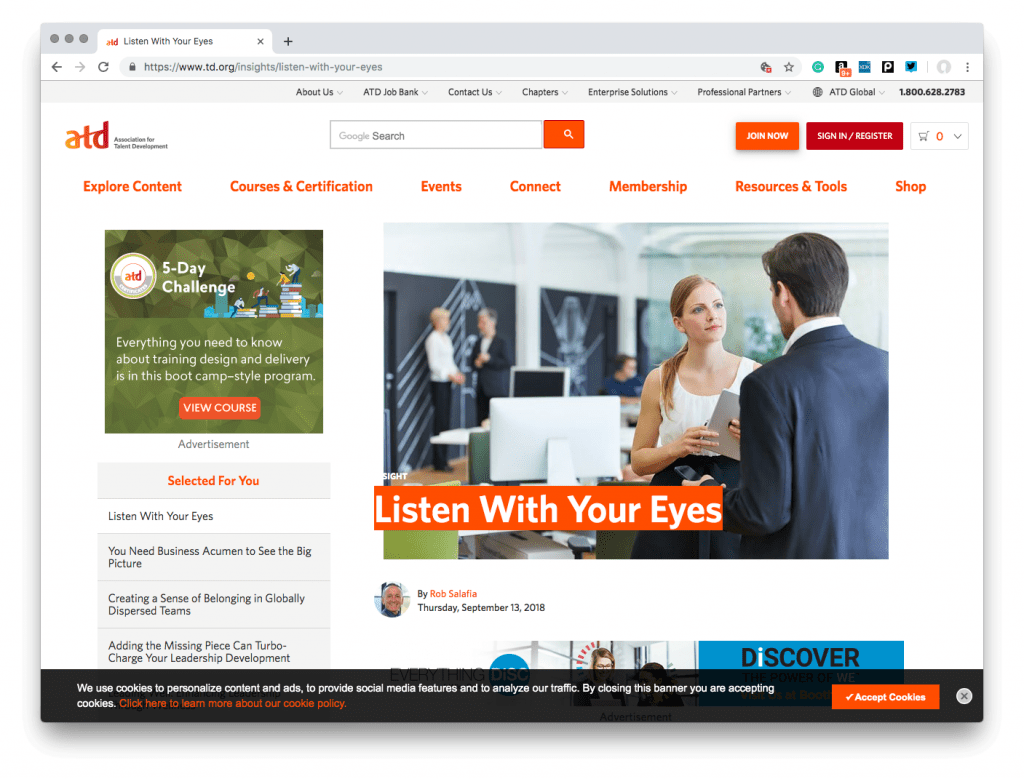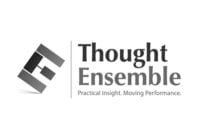Giving another person your full and undivided attention may seem obvious and not worthy of our consideration as a critical leadership capability. Why then is it so hard for so many of us to achieve on a daily basis? With the barrage of things pulling at our attention, it’s easy to get lost in multitasking and distractions to the point where someone can be standing right in front of us, yet our mind is elsewhere.
Consider this story from Dan Collier, senior manager of leadership and professional development at Fresenius Medical Care and former president of the Boston chapter of the Association for Talent Development.
During my daughter, Lauren’s, early school years, I chose to work from home so that I could meet her at the bus and bring her home each day. We developed a habit of talking about her day during the walk from the bus, which continued till I settled her in the room next to my home office.
Most days, I could afford to dedicate attention to her kindergarten stories and adventures. However, one day, I had a very important project consuming my attention. I barely acknowledged Lauren during the walk home. As I got her settled in the room next to mine, my attention was elsewhere.
After a few disingenuous “Uh huhs,” “that’s nices,” and “good for yous,” I noticed her monologue had stopped. Before I could look over to ensure she hadn’t gotten into something, I felt her hands hold my cheeks and turn my head toward her while saying, “No Daddy, listen with your eyes.”
As someone who teaches communication skills for a living, being told by a five-year-old to “listen with my eyes” was an epiphany.
Dan’s daughter may have been only five years old, but she made an incredible point. No one wants to feel unimportant, or as though someone is just going through the motions when speaking to them.
Can you think of a time when someone gave you their undivided attention? When someone listened to you with their eyes? How did this make you feel? How would you describe the quality of their presence, and moreover the quality of the conversation?
Similarly, can you think of a time when someone was “uh-huh-ing” you? What effect did that have on you and what came out of the conversation?
Giving someone our full and undivided attention and “listening with our eyes” is the first step in building a powerful executive presence. It allows others to experience us as both focused and caring. It allows them to experience themselves as being seen, heard, and valued. This has a positive ripple effect—people who feel seen, heard, and valued are much more likely to be engaged and bring their best selves and ideas to the conversation.
Moreover, people notice leaders who put their phones away and pause from their work to dedicate their attention to the person and conversation in front of them. (They also notice the leaders who don’t.) Practicing the art of giving others our full and undivided attention therefore enhances our personal brand, as the positive story that others tell about us spreads.
One simple way to begin building our presence is to become aware of the internal and external forces pulling at our attention and creating distraction.
Answer the following questions:
- What percent present are you right now? Give each of the following a number: physically, mentally, and emotionally.
- What is keeping you from being here 100 percent?
If you aren’t there 100 percent, ask yourself:
- Are you thinking about something that happened in the past? Are you thinking about something that you have coming up?
- Do you have a personal issue that needs to be resolved?
- Are you waiting for a phone call?
- Are you eager to check your email?
Countless things can keep us from being in the present moment. To avoid distraction, we must learn to acknowledge the situation and the feelings it causes, and decide whether we need to deal with it right now or put it aside to be dealt with later. By consciously acknowledging what we are holding onto or what is pulling on us, the hold it has on us automatically diminishes. We are then better able to disengage from distractions and transition to being fully present with others. Don’t just take my word for it. Experiment and see what happens. I am sure you—and others—will be pleased with the results.


























